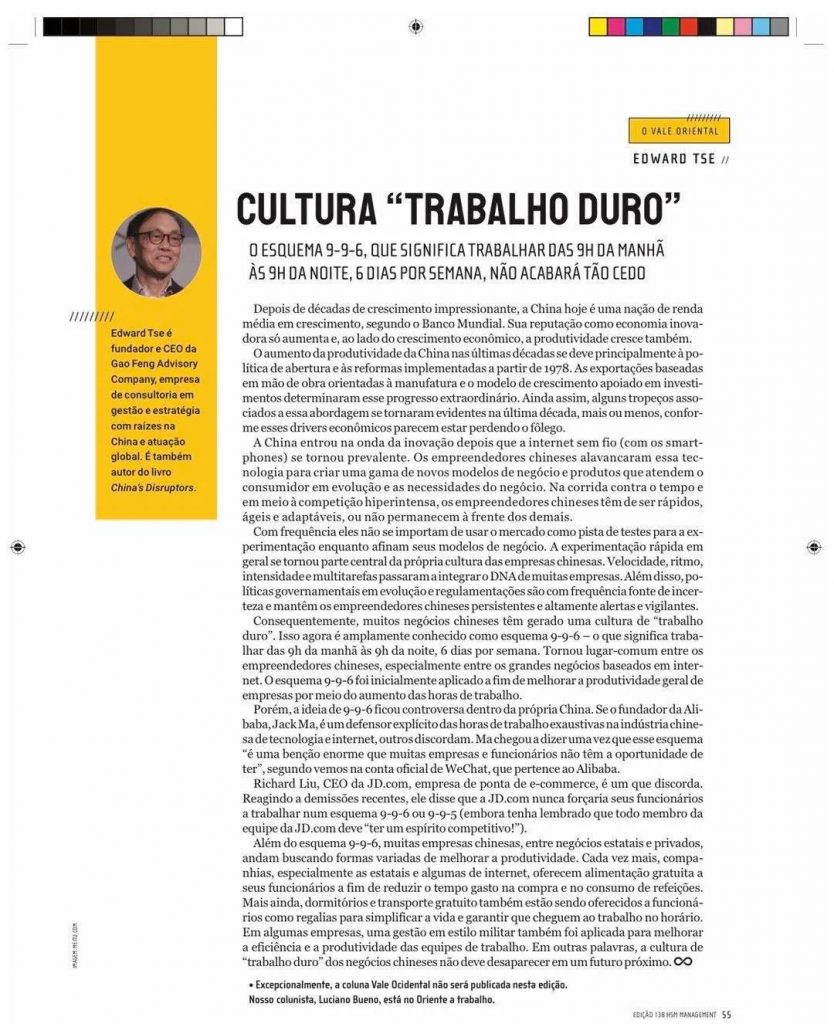
文 | 谢祖墀
2020年2月
正值中国新春来临之际,湖北武汉等地发生新冠肺炎疫情。新冠来势汹汹,没过几日便开始持续霸占了新闻各大头条。病情的发展牵动着中国以及全世界人民的心。
直至2月14日,至少有48个城市已经宣布了“封城”、限流等政策,大部分省市接连推出了延迟返工、延后开学等相关措施。疫情的迅速发展使线下商业活动停摆,各行各业都受到了极大的影响。于疫情期间,各类商品和服务的销量都在下降,其中零售、旅游和休闲等行业受到的影响最甚。此外,疫情也暴露出一些长期存在的社会问题。展望未来,面临着此次挑战,新的机会亦有可能伴随而生,而未来政府机构将更加关心如何完善中国的公共社会议程,而不再是仅仅聚焦于几个特定的垂直领域。
此次冠状病毒危机将在几个方面重塑中国。首先,中国的治理体系将变得更透明与负责。自改革开放以来,中国社会通过不断实践和调整逐渐发展出了一套独特的三层发展模式,使中国的经济持续发展。在顶层,中央政府负责制定国家的发展议程。而在基层,则是快速成长且充满活力的企业家们,尤其是民营企业家,他们是中国商业创新的主要推动者。而在中间的则是地方政府,在连接上下两层的同时,与彼此之间相互竞争或合作,以推助当地经济发展。
在过去的数十年中,这种发展模式尽管有它的一些问题,但总的来说却为中国创造了惊人的经济效益。但随着本次疫情的发展,我们也意识到了这种模式在面对除经济以外更宏观的问题上的短板。所以这个模式在未来必须有所调整,以确保公共议程能更合理推进。未来,中央及省、市、乡镇各级地方政府必须投入更多的精力和资源来强化公共议程的治理。同时,国有企业(SOEs)和私营企业(POEs)将更加紧密地合作,利用各自的优势创造价值。此次疫情中,在国企与民企的共同努力下,武汉的火神山和雷神山医院分别在10天和14天内竣工,着实是一个壮举。
其次,中国各个城市将向智能化与万物互联发展。长期以来,许多人批评中国所谓的“监控社会”,认为当局掌握了民众们过多的数据。然而,当武汉市长向大众宣布自己并不知晓离开武汉的500万人都去哪的时候,政府对民众的监控似乎还未达到大多数人的想象的程度。在未来,为了确保民众更全面的安全,政府应对人们的行动有更加智能和正面、合理的监管。
此外,中国社会的经济格局也在发生变化。消费正在从线下转向线上。同时,此次疫情加速了诸如5G,人工智能和物联网等新技术的商业化应用。

那么疫情过去之后,哪些趋势会带来潜在的商机?
1. 政府将在全国范围内加大投入,创造一个更安全、更健康的生活环境。
2. 在公共卫生领域,早发现、早预防、早诊断和更有效的治疗将成为关注的焦点,而更为全面的公共卫生管理体系也将得到良好的发展。
3.更多的公私合营模式(PPP):企业与政府部门之间的协作能够创建更多的解决方案,推动未来公共议程的发展。
4.物联网、人工智能、5G和区块链等颠覆性技术将持续推进高效连接的智能化社会的发展。
5. 数字化与大数据在公共管理方面的应用将被大幅提高。
6. 新的社会沟通方式将涌现。尽管人与人之间的沟通仍是主流,其他交互形式如人机交互、机间交互将在未来获得指数式的增长。
7. 在过去几十年中,中国的企业家精神和创新能力一直不断上升,这些仍将进一步加速解决在此次新型冠状病毒疫情危机期间暴露出的各类社会和商业痛点。
此次贸易战与新型冠状病毒疫情的爆发已较大程度地打击了中国的经济。在短期内,政府将会加大重大固定资产投资以促进经济发展。除此之外,中国政府亦将以举国之力建立一个可靠的公共卫生体系。近日,中央政府已经宣布将把生化安全纳入国家安全体系,并佐以立法等相关部门的支持。
这些公共项目将以公私合营(PPP)的形式催生更多的商业机会。民营企业将会与政府建立更深层次的合作以建立新一代的智慧城市及其相关基础建设,这将包括在交通运输管理、供应链管理、应急措施、灾难预警及各类信息追踪方面进行更为智能化的建设。举例来说,未来的智慧城市将在追踪个人行径的同时识别潜在的传染者(基于体温进行甄别)并向附近的医院发出预警来从根本上完善公共卫生体系。诸如这般复杂的工程需要政府、各类企业与医疗机构基于大数据的高效合作才能实施与完成。
在疫情过去之后,新的商业模式将随着交互模式的变化而产生,尤其是在大健康、物流、自动化、线上办公、娱乐、零售、教育和社交媒体等领域将会因此得到新的发展。
在物流和机器人领域,人机交互和机对机交互将加速。例如,武汉新落成的火神山医院已经在使用自动化机器人运送食物和药物、对环境进行消毒并帮助医生进行基本的诊断分析。自动化和机器人技术将在未来变得越来越普遍,并逐渐取代大部分的运输模式。
此外,传统的以线下驱动的商业将开始向线上进行转移,这其中包括大健康、零售和教育等行业。在大健康领域,新兴的技术将使更多的服务可以远程实现。除了更有效的诊断和治疗外,未来医疗的重点将更多地放在疾病的预防和早期发现上。
线上工作的方式变得越来越普遍。因为本次疫情,很大一部分上班族首次尝试了远程工作。企业微信、钉钉和其他远程工作工具成为受益者。这一趋势可能可以得到延续,我们今后的工作、沟通方式亦将会有所改变。
在线娱乐亦在不断发展。电影《囧妈》在线上首映,新的盈利模式取代了传统的线下影院盈利模式。此次疫情推助了线上线下融合(OMO,“Online-Merged-Offline”)模式的发展,亦被应用在许多其他行业,如零售和教育领域等等。
此外,社交媒体在我们社会中扮演的角色亦将会演变。长期以来,社交媒体是C2C和B2C模式沟通的桥梁。然而,正如这场危机所表明的那样,它应承担一种新的角色:民众与政府之间的沟通渠道(G2C和C2G)。社交媒体是政府传播信息并非正式地建立问责制反馈回路的有效方式。
这次疫情暴露了中国的不少问题,但亦带来了一些新的机遇。在短期内,从制造业、供应链和消费者需求的角度来看,这场疫情将为在中国运营以及与中国企业有合作关系的企业增加更多的不确定性。从中长期来看,中国必须要大幅完善公共管理体系,将公共管理放在国家议程的重要地位。这次调整将为政府、国有企业、私营企业以及外资企业更广泛协同合作提供了机会,特别是在智慧城市和智能基础设施等领域。新的消费模式、技术的进步以及商业创新将随之而来,从而进一步改变中国的商业格局。
(注:本文图片来自网络)





